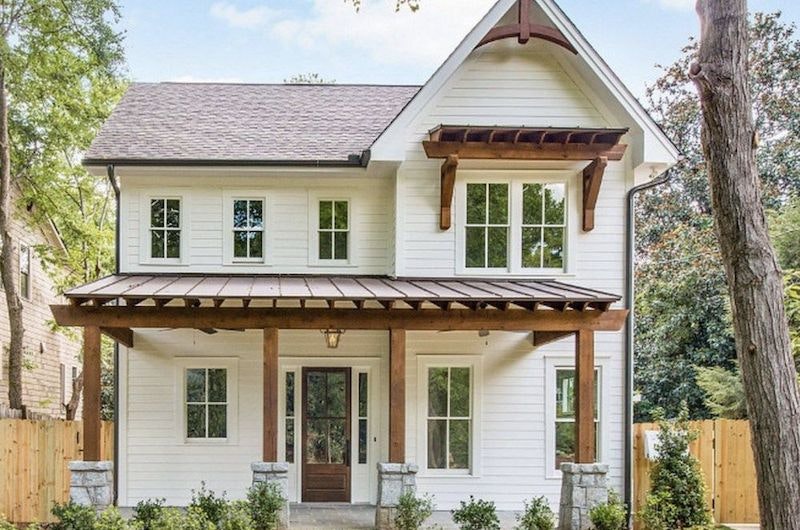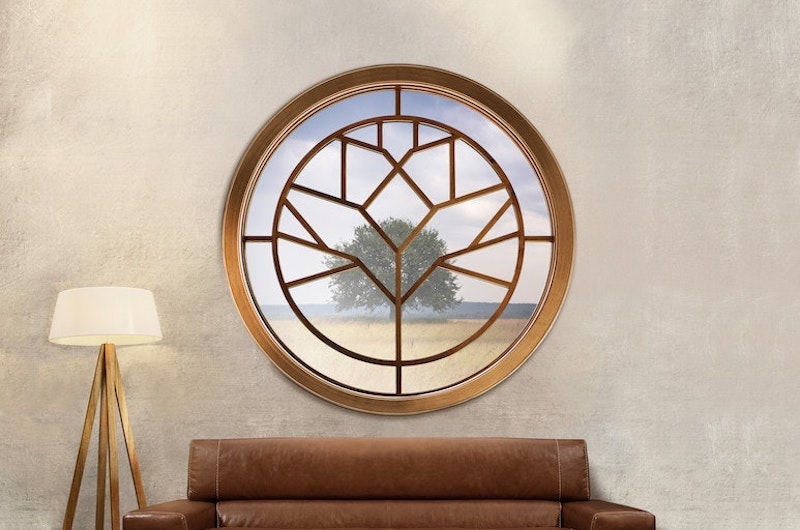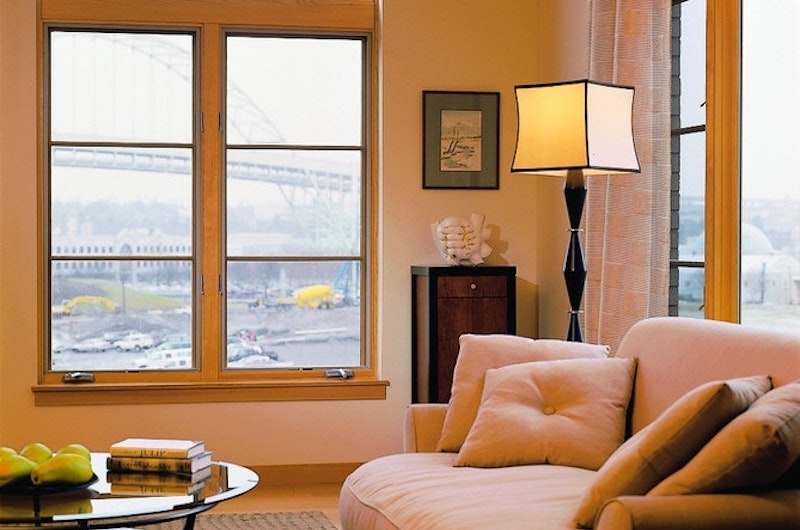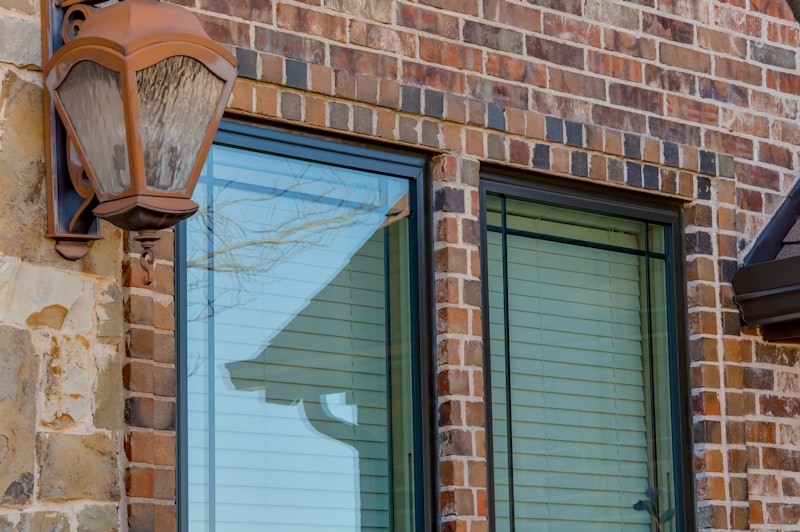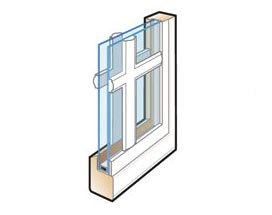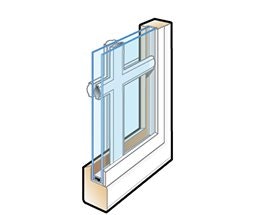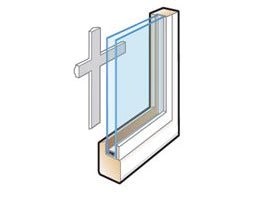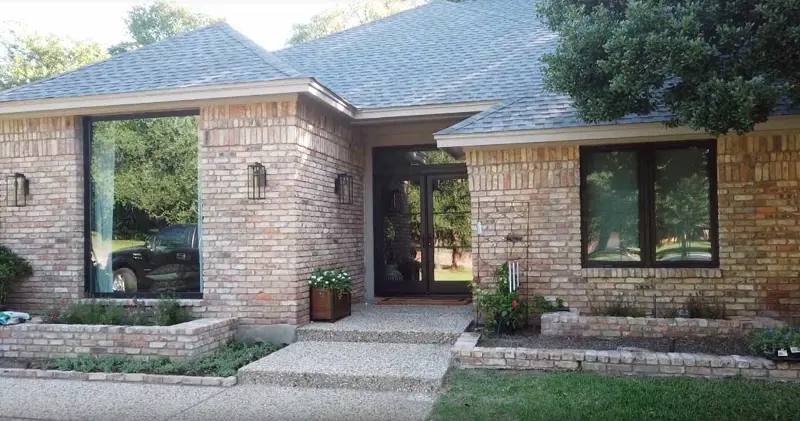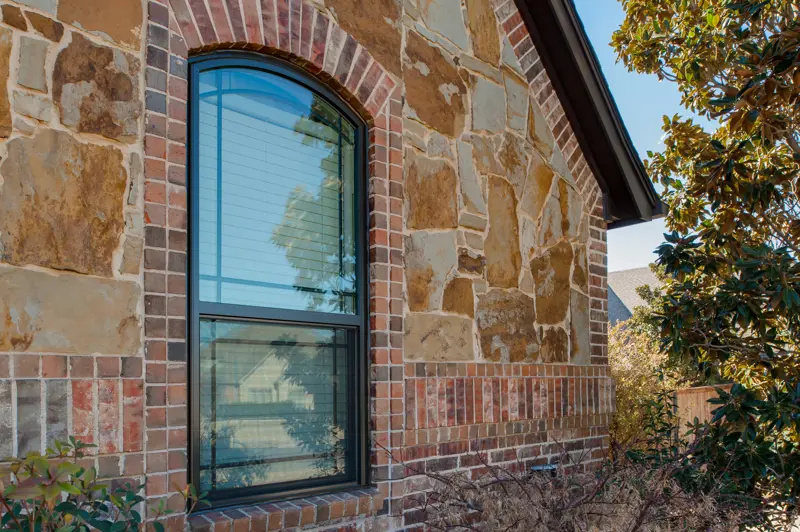
Window Grids: Types, Materials, and Profiles
Window grids, also known as window grills or muntins, are partitions used to visually divide a window into smaller sections for aesthetic reasons. There are a variety of styles and types of grids. In this post, we’ll discuss everything you need to know about window grids so you can decide if they make sense for your new windows.
Use these links to skip ahead
What Are Grid Styles?
The purpose of window grids is to add curb appeal and design elements to your home. Window grids have no functional purpose, nor do they add structural integrity to your windows. The style of the grid refers to the aesthetics of the design and how it divides the glass pane. There are a variety of off-the-shelf types available as well as custom-made options. One of the major factors that will determine the style of your window grid is the architecture of your home. Although there are a variety of grid styles available, we’ll explore five of the most popular.
Colonial
Colonial-style grids partition the window into an even number of proportionate panes giving the window a more traditional look. Generally, the pane is divided into four, six, or nine lites, or sections, creating the appearance of smaller, individual windows within the frame. Double-hung windows are a popular choice for this look. This style might also be found in large, non-operating picture windows.
Colonial grids are one of the most common patterns. You’ll see these on Colonial, Cape Cod, and Tudor-style architecture.
Farmhouse
Often found in double-hung window frames, farmhouse-style grids offer a conventional look much like colonial-type grids. Most often, this style divides the pane into four lites. The panes are typically asymmetrical with vertical rectangles and are taller and narrower than colonial grids. Sometimes, only the top pane of the window is partitioned with the bottom pane not having a grid.
Farmhouse grid patterns are found in Modern Farmhouse architecture as well as other contemporary home styles.
Decorative
If you’re looking for something that really stands out and makes a statement, decorative grids might be for you. Unlike the proportional look of colonial or farmhouse grids, decorative grids create unique patterns for an artistic look. This style is customized to complement the look of your home. Often, only the upper pane has this style of window grid and shapes like smaller squares, rectangles, and diamonds are common. Decorative grid patterns are common in Queen Anne and Craftsman-style houses.
Modern
This style of window grid is best described as minimalist. Modern window grid styles are popular for contemporary homes such as ranch houses. They are perfect for adding interest when a grid is desired, but when something subtle is needed. Modern grids utilize a simple design and feature horizontal lines and are most often found in large windows such as awning and casement styles. This style is also called a specified equal light pattern.
Prairie
The most unique feature of a prairie grid is the large, open center of the window. In this style, the grid lines are found in the top, bottom, and sides of the pane framing the middle of the glass with decorative small rectangular and square patterns around it. The focal point of this design is the plain center which is free of grid lines. The top and bottom of the sashes may or may not be framed symmetrically with horizontal grid lines. There are different types of Prairie patterns including the 6-lite Continual Prairie or Perimeter Prairie, 15-lite Double Continual Prairie or Double Perimeter Prairie, 9-lite Prairie, and the 25-lite Double Prairie. Prairie pattern grids should be reserved for use on Prairie-style architecture.
Types of Grids
The type of grid refers to where it is located in the window and how it is attached. Grids may be placed between the glass panes, over the outside of the glass, and permanently secured with an adhesive, or might be designed to be removed from the interior side of your home for cleaning.
Full Divided Lite
There are three parts to a full divided lite window that create the appearance of authentic individual lites. A full divided lite grid has applications on the interior and exterior of the window as well as a spacer between the glass. The layered grid elements carry through from the exterior through to the interior side of the window inside the home. This type of grid cannot be removed without replacing the glass.
Simulated Divided Lite
A simulated divided lite looks similar to the full divided light except the grid bars are only adhered to the interior and exterior sides of the glass as opposed to between it. Some window companies offer removable grilles instead of permanent which makes cleaning easier.
Grids Between-the-Glass
Internal grids are perfect for homeowners who appreciate the look of grids but prefer low-maintenance, easy-to-clean glass. This type of grid is suspended between the panes of glass without interior or exterior grid applications. Because the grid is inside the glass, it is not removable.
Removable Grids
As the name suggests, removable interior window grids can be easily taken off for cleaning or to change the look of your windows. Removable grids are located on the surface of the window glass and are accessible from inside the home.
Grid Materials
The most common materials for grids are vinyl, wood, or aluminum. Aluminum is the lightest type of metal used to construct grids but not as sturdy as other metals. Iron is the strongest material and good for added security, but prone to rust. Bright or mild steel is often preferred by many window manufacturers because the material is both strong and durable and easy to weld into different shapes.
Grid Widths and Profiles
The profile of the grid specifically refers to the size and shape of the actual divider itself. The width is the thickness of the grid. The clearance between the glass for internal grids is one major consideration when choosing your window grid profile. Different manufacturers offer different profiles and widths for their different window lines. You should choose a grid design that compliments the look of the window and is proportional to its size and shape. Below is an example of the types of options Andersen Windows offers for its grids.
Andersen Grid Widths
|
|
⅝” |
¾” |
⅞” |
1” |
1-⅛” |
1-½” |
2-¼” |
|
|
X |
|
|
|
|
X |
|
|
|
X |
|
|
|
|
|
|
|
|
X |
X |
X |
X |
|
X |
|
|
X |
X |
X |
|
X |
|
X |
|
|
|
|
X |
X |
X |
X |
X |
Do Neighborhoods in DFW Have Window Grids?
We don’t know of any specific neighborhoods in the metroplex where all the houses have grids but now that you know more about grids you’re more likely to notice them as you drive around. The likelihood of a house having grids largely depends on the architectural styles of the homes in the neighborhood.
Deciding whether or not to include grids in your window might be a choice determined by your local HOA, if it’s totally up to you, consider a few things.
- As long as the window grid compliments the look and design of your home, it will only improve the aesthetics and add value.
- Grids typically increase the cost of the window, to save on cost, some homeowners choose grids for their front windows and go without them on rear and side windows.
- Many homeowners are opting out of grids but we don’t recommend that for everyone. In order to respect the architectural style of your house, make sure to do some research before you decide to go without grids.
Window grids are a fantastic way to enhance curb appeal and give your home and windows a unique touch. If you live in the Dallas-Fort Worth area and need help in choosing grids for your next windows, the expert consultants at Brennan will be happy to assist you in your search. Contact us today to schedule an appointment with one of our window consultants.
News, Product Reviews, and Insights
Oops!
We don't currently serve your area but do want to help you plan your project. Try our Build & Price tool to get an idea of window & door costs within DFW. Your area may be higher or lower but at least you'll have some idea of the price.
Thanks for stopping by.





